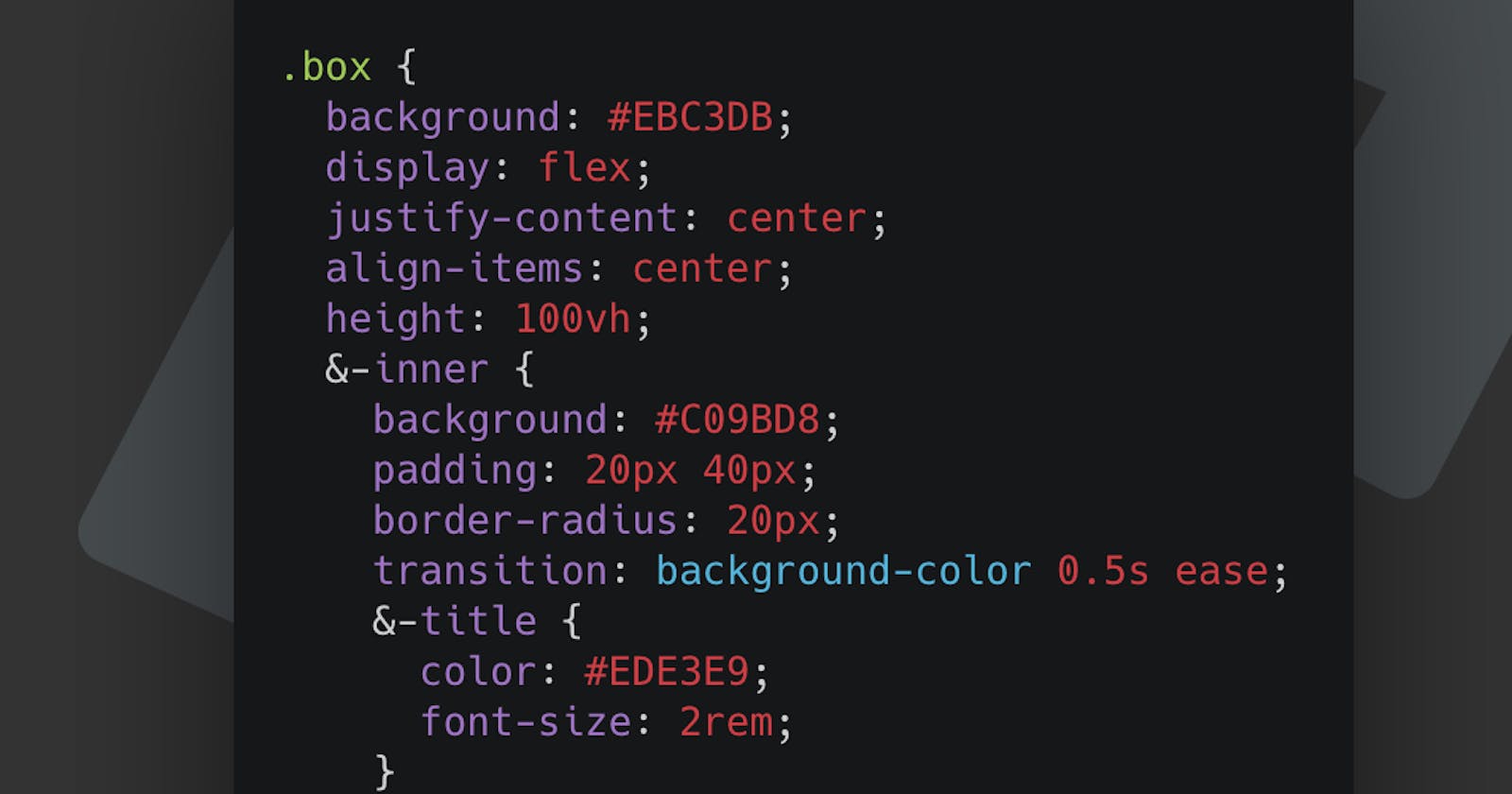This is, without a doubt, my favorite part of SCSS. Nesting is used to nest code inside each other; it's very versatile.
Meaning, in the long term, it will make you think twice about naming because it's easier to sort.
Basic SCSS Nesting
In basic nesting can be used as follows
Let's take the following HTML
<ul>
<li>
<a href="https://daily-dev-tips.com/" target="_blank">Daily Dev Tips</a>
</li>
</ul>
We can then make some cool SCSS like this
ul {
list-style: none;
margin: 0;
padding: 0;
li {
display: inline-block;
background: #333;
a {
padding: 10px;
color: #efefef;
}
}
}
This will then render in the following CSS
ul {
list-style: none;
margin: 0;
padding: 0;
}
ul li {
display: inline-block;
background: #333;
}
ul li a {
padding: 10px;
color: #efefef;
}
This looks like the following Codepen.
SCSS Dash Nesting
Another really cool one is class nesting
<div class="box">
<div class="box-inner">
<h1 class="box-inner-title">
Welcome 👏
</h1>
</div>
</div>
And we can then use the following SCSS
.box {
background: #ebc3db;
display: flex;
justify-content: center;
align-items: center;
height: 100vh;
&-inner {
background: #c09bd8;
padding: 20px 40px;
border-radius: 20px;
&-title {
color: #ede3e9;
font-size: 2rem;
}
}
}
Cool right! It just makes it more easy and clear what a part of your CSS is for.
SCSS Sub Nesting
We can also use sub nesting for our pseudo-selectors.
.box {
&-inner {
&:hover {
background: #9f84bd;
}
}
}
As you can see, these also use the & sign, and can be used for hovers but also nth-child etc.
This will result in the following Codepen.
Thank you for reading, and let's connect!
Thank you for reading my blog. Feel free to subscribe to my email newsletter and connect on Facebook or Twitter

